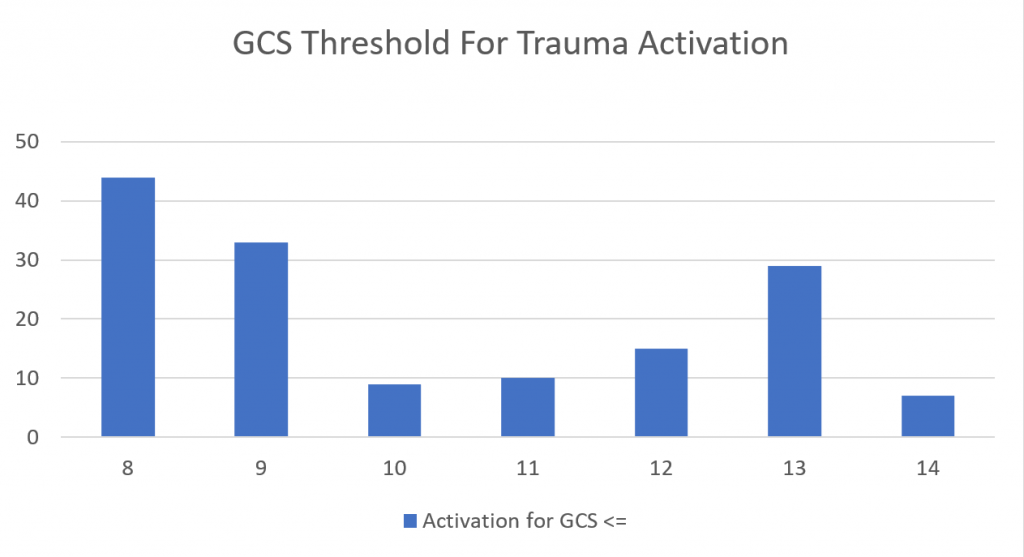All trauma centers have mandatory arrival requirements for the surgeon at their highest-level trauma activations. Most Level I and II centers abide by the American College of Surgeons (ACS) requirement of 15 minutes after patient arrival. Level III centers typically mandate 30 minutes for their highest-level activation. And failure to meet these criteria can actually lead to loss of verification.
But what is the best way to record this critical piece of information? A number of methods have been used over the years. The earliest was simply recording the time of surgeon arrival on the paper trauma flow sheet. This has evolved over the years as technology has advanced. Most hospitals have installed badge swipe systems, since name badges have become nearly ubiquitous for gaining access to restricted areas within the hospital. A paper published last year details one hospital’s experience using a badge swipe system to do just this.
A NYC metro area Level I center started using a name badge swipe system to record the surgeon’s arrival in the ED for trauma activations several years ago. They examined their trauma activation data over a 7 month period at the end of 2016. Surgeon arrival times were recorded on the trauma flow sheet, and the electronic swipe information was included to supplement flow sheet results.
Here are the factoids:
- There were 531 trauma activations during the study period, with 50 highest-level activations and 481 limited activations
- The overall paper trauma flow sheet completion rate was 50% without card swipe data (!!)
- For highest-level activations, surgeon presence was documented in 76%, but they arrived on time (< 15 minutes) only 70% of the time (!!!)
- For intermediate-level activations, surgeon arrival was recorded 47% of the time and the surgeon was on time 45% of the time (I’m running out of exclamation points!!)
- After including the badge swipe data, overall completion rate “improved” to 70%, which broke down to 90% in highest-level and 68% in the intermediate level activations
- Surgeon compliance with arrival times improved to 84% and 63% for the two activation levels
The authors blamed the poor record keeping and compliance on “the fast pace of an ED.” They concluded that the badge swipe system was successful in increasing documentation and arrival compliance.
Bottom line: Oh, this is a fail on so many levels! First, surgeon arrival timeliness was appalling both with and without the badge swipe data. It started at 50% and increased to a barely passing score of 84%. And since this center only receives 100 highest-level activations per year, just a few more slip-ups could easily result in their loss of Level I verification. The increase in arrival compliance after adding badge data could be due to better documentation or better response because the surgeon knew they were being watched (Hawthorne effect).
Obviously, there are many reasons for documentation problems. The surgeon may have, indeed, been late. The scribe may not have been paying attention, or forgot to write the time in because things were busy. The flow sheet could be poorly designed, or worse, electronic.
The addition of technology to overcome human limitations is not the panacea many think it is. First, it’s expensive, especially if new gadgets are being purchased. In this case, it’s the same card swipe technology that is already present in the hospital. So there’s no additional cost in this case.
But it is always more work for some of the humans involved. Card swipe systems do not automatically integrate with a trauma flow sheet, even an electronic one. So some poor human will be tasked with getting the badge swipe report from security. Then, they will have to pore over the myriad card swipes and match the activation times to the data seen on the report. This can be time consuming in a busy ED.
I am still a big believer in personal responsibility. The key players, namely the surgeons, need to feel responsible for reporting their arrival time as a statistic vital to verification of their center. Only when they actually do, and this becomes part of the culture of the entire trauma team, will documentation and compliance approach perfection!
Reference: Implementation of a Radio-frequency Identification System to Improve the Documentation and Compliance of Attending Physicians’ Arrival to Trauma Activations. Cureus 10(11):e3582, 2018.



